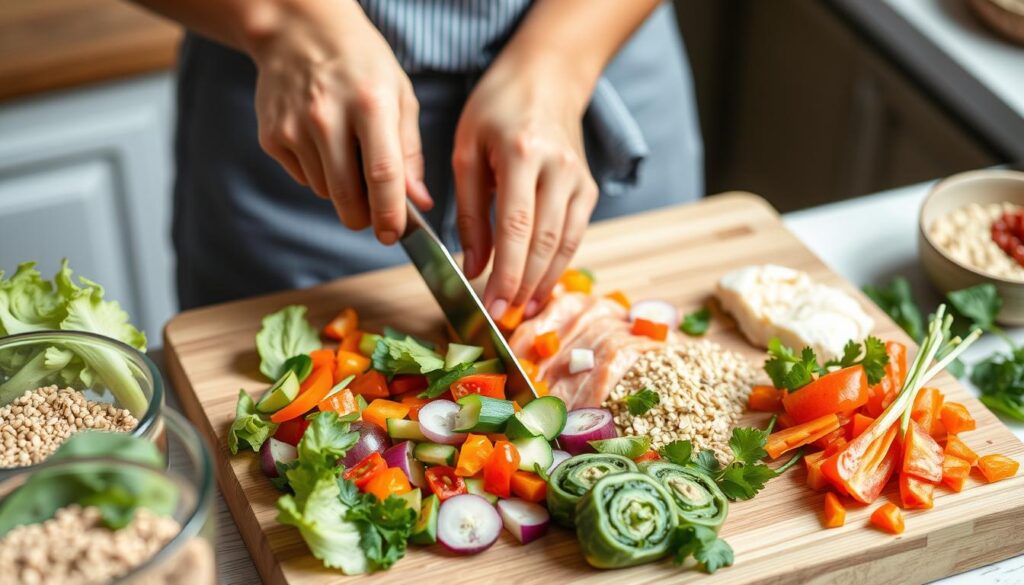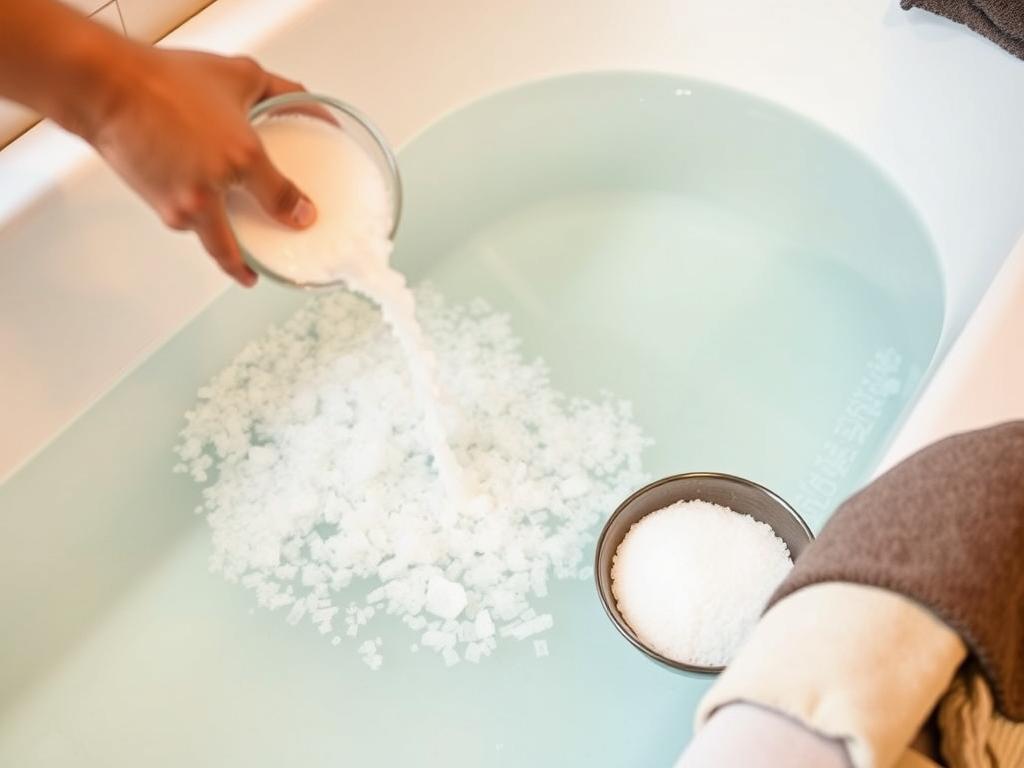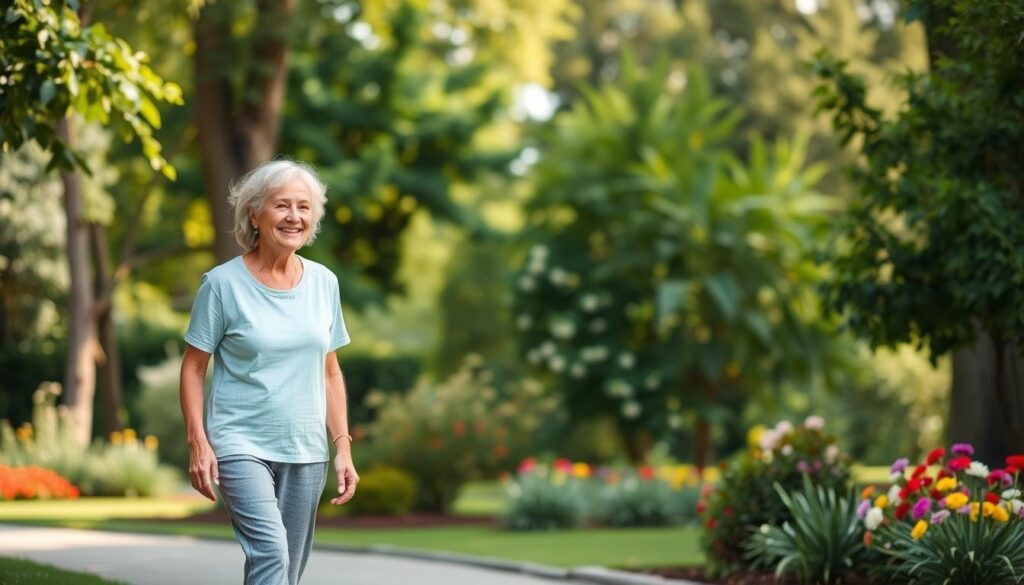Knee discomfort affects millions, from weekend runners to active seniors. Often dismissed as “just aging,” persistent pain below the kneecap can signal deeper issues. When cartilage softens and wears down, everyday movements become challenging. Conventional approaches sometimes prioritize quick fixes, but what if strengthening your body’s own resources offers longer-lasting relief?
This condition, frequently seen in athletes and older adults, creates inflammation and limits motion. While medications or surgery may help temporarily, they don’t always address root causes. We’ll explore how targeted exercises, mindful habits, and holistic strategies can restore joint health without invasive steps.
Physical therapy plays a critical role here. Strengthening muscles around the knee—like the quadriceps—reduces stress on vulnerable areas. Low-impact activities, paired with proper form, protect cartilage while improving range of motion. But recovery isn’t just physical; mental focus and stress management also influence outcomes.
Key Takeaways
- Strengthening leg muscles supports knee stability and reduces pressure on joints.
- Low-impact exercises minimize wear while promoting flexibility.
- Mind-body techniques like yoga aid both physical and emotional recovery.
- Personalized care plans adapt to individual symptoms and lifestyles.
- Consulting a professional ensures safe, effective rehabilitation strategies.
Understanding Chondromalacia Patella
Millions experience sharp discomfort when climbing stairs or squatting – a hallmark sign of cartilage breakdown beneath the kneecap. This cushioning tissue normally allows smooth gliding during movement. When it softens or frays, friction disrupts mobility and triggers persistent aches.
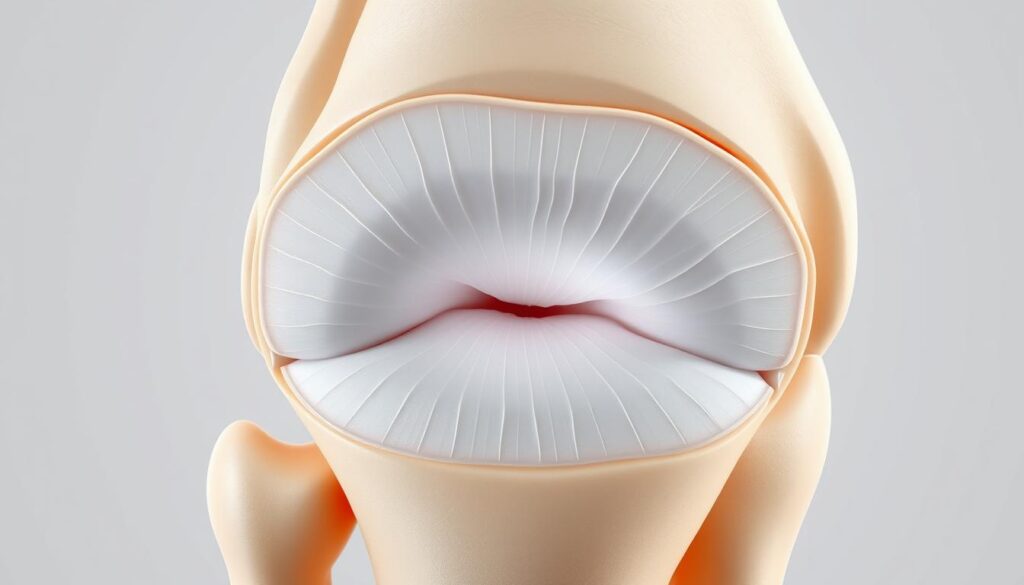
What Is Chondromalacia?
Medical experts define this condition as the progressive wear of cartilage lining the underside of the kneecap. Johns Hopkins Medicine notes it often results from repetitive stress or improper tracking of the patella. Without shock absorption, bones grind together, causing inflammation and reduced range of motion.
Causes and Risk Factors
Muscle imbalances are primary contributors. Weak quadriceps fail to stabilize the kneecap, while tight hamstrings pull unevenly. High-impact activities like running amplify pressure on vulnerable joints. Structural issues, such as flat feet or knock knees, further misalign movement patterns.
Age and gender play roles too. Adolescents undergoing growth spurts and women with wider pelvic structures face higher risks. A 2023 study in Sports Health linked sudden increases in workout intensity to accelerated cartilage damage in athletes.
Recognizing these triggers helps tailor strategies that address root causes rather than masking symptoms. Early intervention preserves joint health and prevents long-term limitations.
Recognizing Symptoms and Diagnosis
Persistent knee issues often start subtly but escalate without proper attention. Identifying early warning signs helps prevent long-term joint damage. Let’s break down what to watch for and how professionals confirm the root cause.
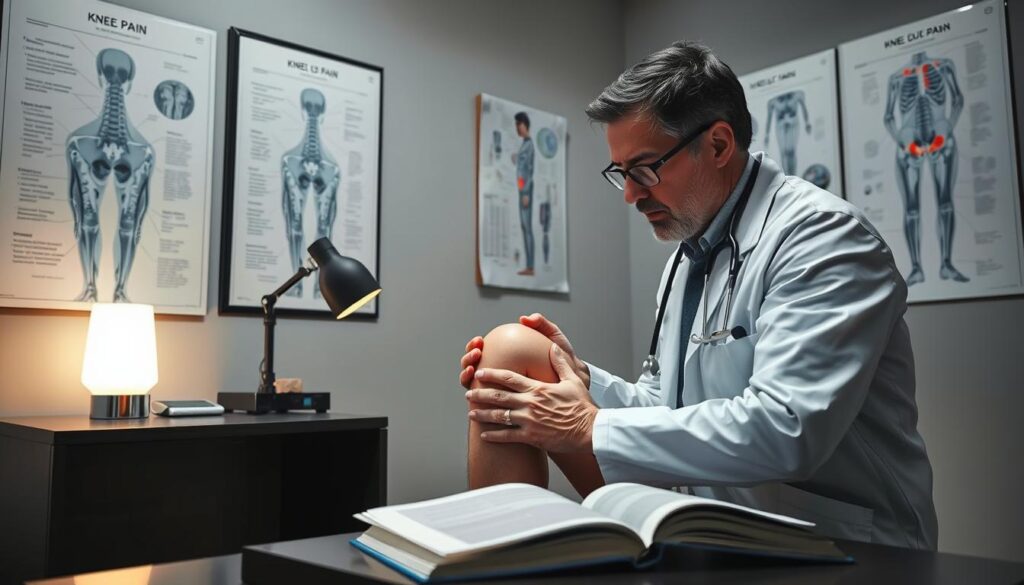
Spotting Key Indicators
A dull ache behind the kneecap during activities like climbing stairs often signals trouble. Many report a grating sensation or audible crunching when bending. Swelling may follow prolonged sitting or intense workouts.
Subtle changes in movement patterns can reveal cartilage wear before severe pain develops,” notes a 2023 study in the Journal of Orthopaedic Research.
Confirming the Condition
Doctors typically begin with hands-on assessments like the patellar grind test. Imaging tools provide deeper insights:
| Method | Purpose | Accuracy |
|---|---|---|
| Physical Exam | Assess tenderness & alignment | 70-80% |
| MRI Scan | Visualize cartilage wear | 90%+ |
| Arthroscopy | Direct tissue inspection | Near 100% |
Collaboration between physicians and physical therapists ensures comprehensive evaluation. Tracking symptom patterns over weeks helps distinguish this condition from similar issues.
Natural Treatment Options for Chondromalacia patella natural treatment)
Taking proactive steps to address cartilage wear can improve mobility and comfort. Non-invasive strategies focus on rebuilding strength while minimizing strain. Let’s explore methods that combine modern science with holistic principles.
Targeted Movement Strategies
Structured exercise programs prioritize muscle balance around affected areas. Leg presses and controlled squats build quadriceps strength without jarring impacts. A 2023 Journal of Sports Rehabilitation study found patients using these techniques reported 40% less discomfort during daily activities.
Complementary Care Methods
Acupuncture shows promise in reducing stiffness by improving blood flow to tissues. Chiropractic adjustments help correct alignment issues contributing to uneven pressure. Research from the National Institutes of Health notes these approaches may enhance traditional rehabilitation plans when used together.
Nature-Inspired Solutions
Turmeric and ginger contain compounds that may ease swelling naturally. These spices can be incorporated into meals or taken as supplements after professional guidance. One trial observed participants using ginger extract experienced improved flexibility within eight weeks.
Always consult a healthcare provider before combining therapies. Individual responses vary, and safety should guide every decision. Pairing evidence-based practices with personalized adjustments offers the best path toward lasting relief.
Effective Exercise Routines and Techniques
Building strength through movement helps protect vulnerable joints while restoring mobility. The right exercises stabilize the area around the kneecap, easing strain during daily tasks. Focus on controlled motions that prioritize form over intensity.
Strengthening and Range-of-Motion Exercises
Start with straight leg raises to engage the quadriceps without bending the joint:
- Lie flat, tighten thigh muscles, and lift one leg 6 inches off the ground.
- Hold for 5 seconds, then lower slowly. Repeat 10 times per side.
Clamshells activate hip and glute muscles, improving alignment:
- Lie on your side with knees bent at 45 degrees.
- Keep feet together while lifting the top knee upward. Pause, then return.
Exercise Modifications and Avoiding High-Impact Movements
Swap risky activities with gentler alternatives:
| Exercise | Modification | Benefit |
|---|---|---|
| Deep Squats | Wall Sits | Reduces kneecap pressure |
| Running | Cycling | Maintains cardio with less impact |
| Jumping Jacks | Step Taps | Preserves rhythm without jarring |
Guidelines for Safe Activity Levels
Progress gradually. Begin with 2 sets of 8-10 repetitions, increasing only when movements feel effortless. A physical therapist from this resource advises: “Rushing leads to setbacks. Consistency matters more than speed.”
Stop immediately if sharp pain occurs. Mild discomfort during workouts is normal, but persistent aches signal overexertion. Pair exercises with stretching to maintain flexibility.
Integrating Mind-Body Therapies for Knee Health
Healing extends beyond physical adjustments—it requires harmony between body and mind. Research shows psychological stress amplifies discomfort by tightening muscles and altering movement patterns. Addressing both aspects creates a foundation for sustainable recovery.
Calming Practices for Joint Support
Meditation and yoga reduce tension that contributes to joint strain. A 2023 NIH review found 12 weeks of mindful breathing lowered inflammation markers by 18% in chronic pain patients. Gentle poses like supported bridge or seated forward folds strengthen leg muscles while improving focus.
Biofeedback devices offer real-time data on muscle tension, helping users correct imbalances during daily activities. One study noted participants using these tools improved walking patterns within four weeks.
Structural Alignment Techniques
Chiropractors assess how hip or spinal misalignments affect knee pressure distribution. Soft tissue manipulation and targeted adjustments restore proper mechanics. The American Chiropractic Association reports 63% of patients experience reduced ache after six sessions.
Combining these methods with strength-building routines creates a synergistic effect. Patients often report better posture and increased stamina during rehabilitation exercises.
“Mental clarity directly impacts physical recovery—stress reduction allows tissues to heal efficiently,” states Dr. Elena Torres, a sports medicine specialist.
Consistency matters. Even 10 minutes daily of mindful movement can build resilience against flare-ups. Pair these strategies with professional guidance for optimal results.
Conclusion
Restoring knee health demands a balanced approach that addresses both physical mechanics and daily habits. Recognizing early signs like grinding sensations or swelling allows timely intervention. Combining low-impact leg exercises with therapies like yoga creates a powerful defense against recurring discomfort.
Personalized plans prove critical, as factors like muscle strength and activity levels vary widely. Research shows tailored programs improve joint function 30% faster than generic approaches. Always consult a healthcare professional before adjusting routines—they’ll ensure exercises align with your unique symptoms.
Maintaining motion through safe activities preserves cartilage while reducing stiffness. Simple modifications, such as cycling instead of running, protect knees without sacrificing fitness goals. Mind-body practices further enhance results by lowering stress-related inflammation.
We encourage readers to stay proactive. Explore trusted resources and prioritize consistent care. With the right strategies, lasting relief becomes achievable—one mindful step at a time.
FAQ
How does muscle imbalance contribute to knee discomfort?
Weak quadriceps or tight hamstrings can alter kneecap alignment, increasing stress on cartilage. We recommend targeted strengthening and stretching to restore balance and reduce strain on the joint.
Can improper footwear worsen symptoms?
Yes. Shoes lacking arch support or cushioning may disrupt leg alignment during movement. We suggest opting for footwear designed to stabilize the feet and minimize impact during daily activities.
Are anti-inflammatory diets effective for managing swelling?
Incorporating omega-3-rich foods like salmon or walnuts may help reduce inflammation. We also advise limiting processed sugars and refined carbs, which can exacerbate tissue irritation.
What role does physical therapy play in recovery?
Therapists design routines to improve range of motion while strengthening muscles around the knee. Techniques like guided stretches or resistance training enhance joint stability without overloading the area.
How do low-impact exercises protect cartilage?
Activities like swimming or cycling distribute force evenly, minimizing direct pressure on the kneecap. We prioritize these movements to maintain mobility while safeguarding delicate tissues.
Is acupuncture a viable option for pain relief?
Studies show acupuncture may stimulate blood flow and trigger natural pain-relieving responses. Many patients report reduced stiffness and improved function after consistent sessions.
When should imaging tests like MRI be considered?
If rest and therapy don’t alleviate persistent discomfort, we use MRI or X-rays to assess cartilage wear or structural abnormalities. Early diagnosis helps tailor interventions to individual needs.
Can yoga improve kneecap alignment long-term?
Yes. Poses like chair pose or bridge pose build strength in the hips and core, promoting proper tracking. We combine yoga with biofeedback techniques to reinforce mindful movement patterns.
What adjustments reduce strain during daily tasks?
Avoiding deep squats, using knee pads for kneeling, and elevating the leg during rest periods can lower stress. We also teach posture modifications to protect the joint during repetitive motions.






